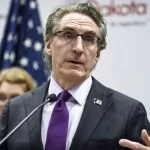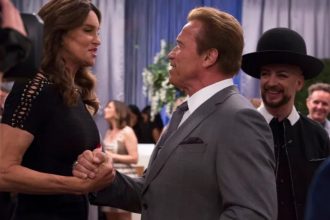On August 28, 1963, towards the end of the civil rights movement, millions of people rallied and marched in Washington, DC, in an iconic attempt to demand an end to the persistent injustice and racial inequity, and segregation that has plagued the black race for such a long time. On this day, civil rights leader Martin Luther King Jr, among many others, took the podium and delivered the I Have a Dream speech that still resonates with us so many decades after.

It is not surprising that although over fifty years have passed, Martin Luther’s want is nowhere near actualization. The fight to end racial inequality still stands as young black men and women in society still suffer police brutality, to passive aggressiveness just because of their skin color. Although we should acknowledge our progress and admit that things were not as volatile as they used to be, we can’t help but wonder when it will all stop and actions that can get us to victory quicker.
What Martin Luther King Said About Systemic Racism?
“The Negro still is not free; one hundred years later, the life of the Negro is still sadly crippled by the manacles of segregation and the chains of discrimination.” This statement was part of Dr. King’s sermon on that fateful day in Washington. This was in 1963.
Now, it’s been five decades, almost six, since that iconic sermon, and nothing has changed. It’s been almost 150 years since slavery was allegedly abolished, yet blacks still face systemic disadvantages and injustice. We can see this in every aspect of the economy, and how they seem to be at the bottom of the chain and on the receiving end of the lack of laws meant to protect their education, financial liberation, health, and even mortality.
In King’s book titled Stride Toward Freedom, he said, “True peace is not merely the absence of tension; it is the presence of truth.” This explains the need for a proper system and representation for people of color that ensures they get a fair and proper hearing, just as is afforded the Whites.
The Core of Martin Luther King’s Dream
Since its delivery in 1963, King’s “I Have a Dream” sermon has left a resounding mark and has become a constant debate amongst people till today. Even in schools and other gatherings, this sermon is used as a lesson and lifeline. For students, there are so many essays about I have a dream online written by other students or intellectuals attempting to explain the theory behind this powerful sermon.
Although the most popular excerpt of this sermon was, “I have a dream that one day my four little children will one day live in a nation where they will not be judged by the color of their skin, but by the content of their character,” the entire expression was way more than that.
The core of the dialogue was a strong demand for racial equality, love, and peace. He enumerated this in his Anti-War Conference in Los Angeles, California, on February 25, 1967, by saying, “It is not enough to say ‘We must not wage war.’ It is necessary to love peace and sacrifice for it. We must concentrate not merely on the negative expulsion of war, but the positive affirmation of peace.”
Martin Luther King’s Solution to Racism
Although no one has a solution set in stone, King has been used as a template for centuries due to his dedication and commitment to this course. Asides from being one of the top leaders of the early black movements, he was also an academic and reverend who wrote many journals and articles to seek the public’s awareness of the lack of human rights and segregation of people of color in the United States.
King started and led the campaign that ended the segregation laws of the Montgomery public transportation system, and was arrested thirty times for his civil activities. Although many people misunderstand his goal and claim he was fixated on tolerance as a means to end racial inequity, this is not true. Kings preached love and peace as a solution, as you can tell from all his sermons and quotes.
On February 4, 1968, MLK gave a sermon where he said, “Yes, if you want to say that I was a drum major, say that I was a drum major for justice, say that I was a drum major for peace, I was a drum major for righteousness, and all the other shallow things will not matter.”
Why Tolerance is Insufficient
While tolerance is a great step toward seeing black and white folks living together in peace, it is insufficient for a long-lasting relationship. Tolerance indulges a permissive attitude, almost bordering on indifference or endurance. It doesn’t inspire true love; it loosely translates to the passive acceptance of that race because of certain reasons holding you back.
MLK preached love, peace, and the need to see the truth met out, regardless of the person’s skin color. In his Nobel Peace Prize acceptance sermon in Oslo, Norway, in 1964, he said, “I believe that unarmed truth and unconditional love will have the final word in reality. This is why right, temporarily defeated, is stronger than evil triumphant.” He strongly believed that unless we develop a strong love for one another and put each other first, we might not see the end of this deadly hate.
Is it Possible to End Racism?
The resounding answer is yes. Since MLK’s Washington sermon in 1963, we have recorded a decrease in this deadly virus, which tells us that if we put in more work, we will continue to record more changes. The first step is to acknowledge it exists in various forms and minor biases; then, we can tackle and overturn the discriminatory laws that doggedly keep racial inequity in the system.

Next, we must learn to see everybody as a human like us, regardless of their skin color or ancestry. Once we realize this, love will naturally flow, and it becomes easier to tackle this problem.
Bottom Line
No one is saying it will be easy, but if everyone acknowledges that they have a role to play, then the burden will be lighter on everyone else to fight. Even as a student, you have a major role, no matter your age or academic level. Learn to always stand up to any form of racial inequality you encounter, especially when it threatens to impact lives drastically.
As a white student, you can be anti-racist by acknowledging the differences instead of pretending they aren’t there. You must also amplify the voices of the minority, which in this case are the people of color. When we all fight together, this problem will eventually end.















